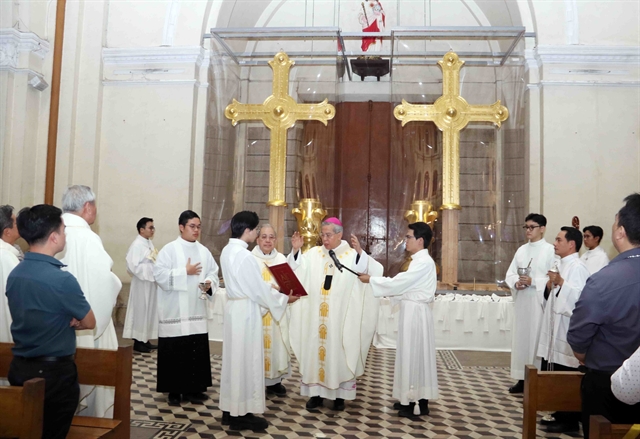 Life & Style
Life & Style
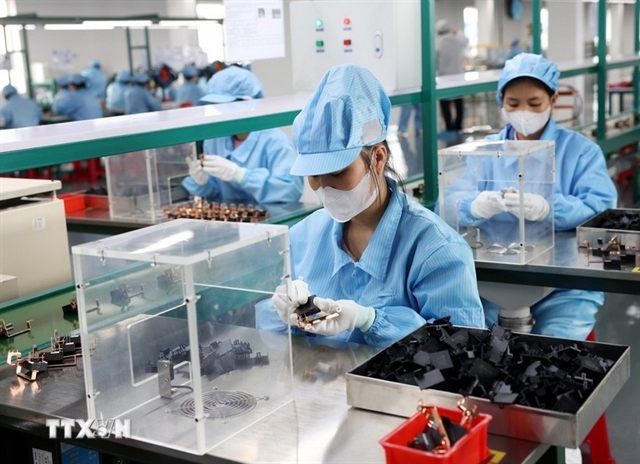
The first day of the new year was also time for the Sedang, an ethnic group among the 54 ethnicities of Việt Nam, to celebrate their New Rice Festival.
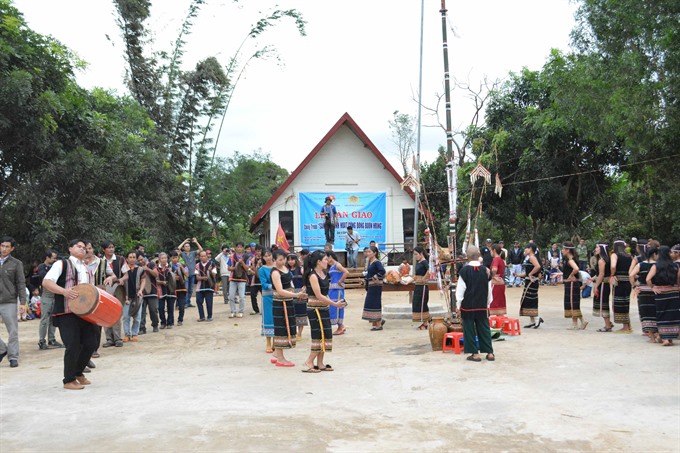 |
| Boogie time: Villagers dance and sing around the totem tree. — VNS/VNA Photo Tuấn Anh |
The first day of the new year was also time for the Sedang, an ethnic group among the 54 ethnicities of Việt Nam, to celebrate their New Rice Festival.
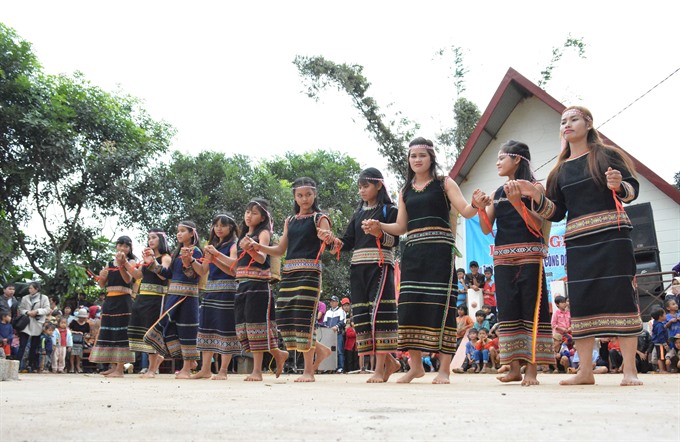 |
| One two step: Young Sedang women perform a group dance in front of the village’s communal house. |
One of the most important festivals for the Sedang, the festival is held at the beginning of the year to appease the spirit of the rice, to celebrate a bountiful harvest and to pray for good fortune in the new year.
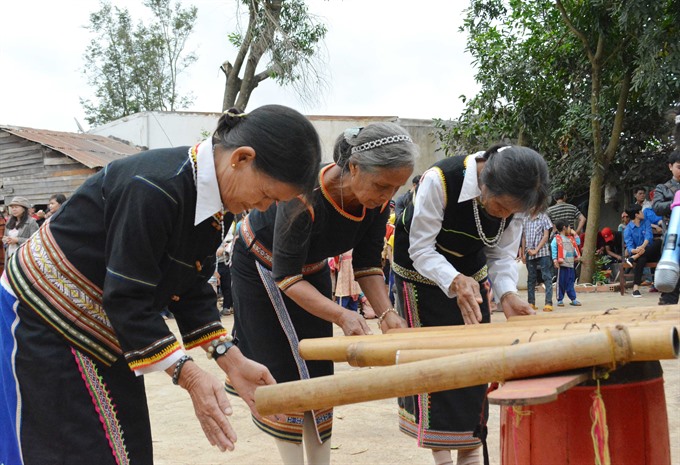 |
| Feel the beat: Sedang elder women play the Klongput during the celebration. |
The festival begins with Sedang families going to their rice field to pick the most beautiful rice plants and bring them home. Families must prepare food offerings to the spirit using the new rice.
On the day of the ceremony, a village elder summons everyone to the village’s nhà rông – the Sedang’s communal house where the majority of their spiritual and social activities take place. Young men erect a cây nêu – a tall tree with a totem on top of it – in front of the house.
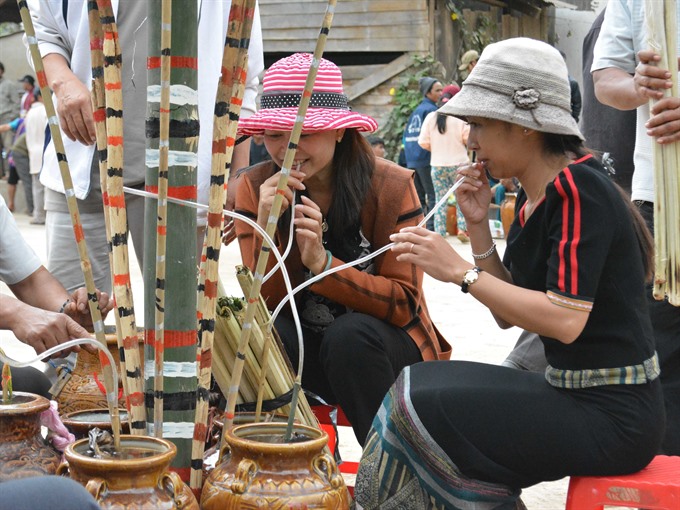 |
| Bottoms up: Visitors invited to sit down and share tube wine with the village. |
The Sedang dance and sing around the tree. Their musical instruments include gongs in various sizes and the Klongput – a wind clap xylophone. Made of bodies of bamboo trees cut and designed in different length, the xylophone sound is made when people clap their hands near one of their ends.
 |
| Celebration: Sedang men play the gongs during a ceremony at the festival. |
Most of the Sedang villages, which house a total population of nearly 100,000, are located in Viet Nam’s central highlands region. Isolated and often without contact with other villages, the Sedangs were said to be fierce warriors years ago. The Sedangs now make farming their primary occupation. — VNS




